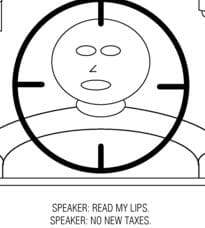Does the arrival of Apple’s new wireless AirPods, which carries a retail price tag of $159, signal a new era of how we connect with our smartphones and laptops? Given the cultural significance of an Apple product launch, it is a good bet that the AirPod wireless headphone is the catalyst needed for the hearable market to really take off over the next year or two.
Today, there are several other products, including the Bragi Dash, Doppler Lab’s Here One and the Samsung IconX that work in a similar way to Apple’s new AirPods: wireless “smart earphones” that include a music player, pedometer, pulse rate monitor, even the ability to customize incoming sounds. Some of these products, such as Nuheara’s IQ Buds and Jabra Elite Sport use “hearing aid technology” in them.
That last feature -the ability to customize sounds around you – seems eerily similar to how a hearing aid works. At the moment, however, none these products, per informal analysis, seem to provide amplification to overcome the effects of a mild hearing loss. This, of course, could change in the very near future, as these devices become more sophisticated.
Apple Decision Part of “Larger Trend”

Will the AirPods usher in a new era of audio computing?
Ostensibly, the Apple AirPods were launched in order to make the new iPhone 7 smaller and water resistant. But, according to several reports, Apple’s switch to a wireless earphone signals a larger trend toward audio, rather than visual, computer interfacing.
From the earliest days of the personal computer, all the way through the modern smartphone, computing has usually relied on some kind of visual display, whether that’s a TV, monitor, watch face, or touchscreen, plus some kind of keyboard, physical or virtual.
Unlike visual interfaces with your laptop or smartphone, which demand your attention, an audio interface enables near constant connectivity with your computer.
The end goal, as some suggest, is a more immersive type of computing, where the interface itself becomes invisible – it’s just you talking to the “cloud” or an app using your wireless earphones. In the case of Apple, the user would using Siri to communicate with various apps via the AirPods.
Need for Customization: More Business for Hearing Care Professionals?

Woman gets ear impressions taken. Image courtesy sound and vision.
This trend, in which people listen to their computer via a wireless earphone, rather than look at it via a screen, could be a boon for audiologists. After all, as one audiologist pointed out, “if everyone is going to be listening to Siri with AirPods, many people will need customized earmolds to prevent the AirPods from falling out and getting lost.”
In addition to the travails associated with poorly fitting earbuds, if audio interfacing is truly the wave of the future, the recharging capacity of battery power will need to improve. If Apple, Bragi, and others want us to wear their wireless ear phones all day long, then we will need more than 4 or 5 hours of continual use from a single charge, as is currently the case.
Considering the most natural way humans pass information to each other is by sound, speech, and music, the era of the hearable offers instantaneous, constant and seamless communication for all. It also might be a significant opportunity for audiologists and other hearing care professionals to provide a new service to a burgeoning market.








Nice article, Brian!
A question about paragraph 3 and amplification. I can connect to my hearing aid apps via wired earpieces,, no problem. Can someone explain why I can’t do so wirelessly? Is there something about the iPhones that doesn’t allow apps access to outgoing Bluetooth?
Bottom line: Does anyone know whether this is a minor obstacle, or is it inherent in the way that the iPhone is configured somehow?
Thanks, from a reader with limited tech knowledge.